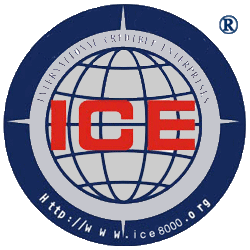Enterprise Working Capital Analysis-World Credit Organization
3.10 Analysis of corporate working capital
A company has sufficient working capital to ensure its ability to pay its current liabilities in a timely manner when they become due. Insufficient working capital is the main reason for slow outbound payments. What's more, it is also the direct main cause of financial distress and failure in the long run. Therefore, if we want to analyze the financial risk and solvency of the enterprise more deeply, we also need to analyze the working capital of the enterprise.
1. The concept of working capital
Working capital is often referred to as net working capital, net current assets, and occasionally net working assets. Working capital is the excess of current assets over current liabilities, expressed as:
Current assets - current liabilities = working capital
If a company has more current liabilities than current assets, it is said to be in deficit working capital. Let's take a simplified example to see how working capital is generated and played a role in an enterprise.
Step 1: Investors set up the company with cash, and part of the cash is invested in fixed assets or long-term assets necessary for production and operation, and the rest is transformed into the initial working capital of the enterprise.
The second step: During operation, enterprises can purchase raw materials through credit purchase, forming current liabilities (accounts payable). During production, the wages of employees must be paid in cash. This part must be completed by working capital, and this part of capital will eventually be added to the cost of the product.
The third step: workers process raw materials to produce finished products.
Step 4: The finished product is sold to the customer on credit to generate accounts receivable.
The fifth step: the enterprise collects the accounts receivable and gets cash. A portion of the cash is used to pay accounts payable (current liabilities).
Step 6: If all goods are sold and all accounts receivable are collected, the cycle ends. If profitable, the cash will be more than initially invested. Profits can be used to pay dividends, invested in other fixed assets or retained as working capital to meet the requirements of future business expansion.
The above example has been simplified to an ideal situation for the sake of illustration. In reality, production and sales are always carried out simultaneously, so at any one time the balance sheet must show cash, accounts receivable, inventory, and other assets, as well as unpaid debts. The above examples fully demonstrate that working capital is the basic guarantee for the good operation of an enterprise.
Here is an example of calculating working capital based on the numbers on the balance sheet:
Cash |
19,000 |
Accounts Receivable |
79,000 |
Stock |
52,000 |
Total current assets |
150,000 |
Less: Total Current Liabilities |
78,000 |
Working Capital |
72,000 |
2. Working capital analysis
Working capital analysis is to conduct a comprehensive and thorough analysis of working capital, identify a large number of factors that cause changes in working capital, and correctly judge whether a company's financial management policy is reasonable through changes in working capital. Whether the amount of working capital of an enterprise is appropriate will directly affect the ability of the enterprise to repay debts and maintain financial solvency.
For the analysis of conventional working capital, analysts mainly need to know whether the working capital of the client company is sufficient, and also analyze the composition of working capital, check the quality and liquidity of accounts receivable, and finally look at the present value of the inventory. If the inventory has poor liquidity in the market, its value should be discounted on the basis of the original value. Although these analyzes can yield useful results, by systematically analyzing working capital and looking for the reasons for changes in working capital, we can get some deeper information. Our analysis can also drill down to:
(1) What impact will the increase in the company's fixed assets have on the growth of working capital
(2) To what extent will the increase in other dead assets delay the increase in working capital
(3) In order to meet the simultaneous growth of working capital and sales, is the profit sufficient?
(4) Whether the dividend policy can support the steady growth of working capital
(5) Operating loss, whether it is consuming a large amount of working capital
(6) Whether the company has the ability to repay the long-term debts due each year without reducing the working capital
(7) Will the redemption of outstanding shares have an adverse effect on the growth of working capital?
(8) Will the new funds be used to improve the working capital situation or to expand investment in fixed assets
The answers to these questions will provide powerful evidence for us to judge the profitability and risk of the enterprise comprehensively and correctly.
3. Changes in the amount of working capital
The focus of our research and analysis is the change of non-current items in the balance sheet, so as to find the source of the change of working capital.
(1) There are many reasons affecting the change of working capital. It should be noted that:
1. The same change in current assets and current liabilities will not affect working capital. For example, buying inventory on credit means increasing inventory (current assets), increasing accounts payable (current liabilities), and the increment is the same.
2. Changes in non-current items including deferred assets, deferred liabilities and net capital value will affect working capital. For example, buying a piece of machinery with cash reduces current assets but does not affect current liabilities, resulting in a reduction in the amount of working capital.
(2) Businesses that affect changes in working capital
There are many businesses that affect working capital, but in summary, only the second type of funding source and application can affect the change of working capital. The analyst need only check whether all businesses fall into one of these two categories, and if so, they must affect working capital. These two categories are:
1. Changes in net worth. The increase in net worth is the source of funds for increasing working capital, and the decrease in net worth is the use of funds for reducing working capital. A decrease in working capital caused by a decrease in equity is also the most dangerous, especially a decrease in equity due to a loss. Paying cash dividends naturally reduces equity, which in turn reduces working capital. The issue or sale of shares, if raised to meet working capital needs, will provide permanent funding for the increase in working capital. Likewise, if shares are redeemed in a way that pays off current assets or creates current liabilities, it will also reduce equity, which in turn reduces working capital.
2. Changes in dead assets. The reduction of dead assets is the source of funds for increasing working capital: the increase of dead assets is the application of funds for reducing working capital. If a client business is expanding or modernizing its plant, credit analysts should know whether financing is appropriate. If the business has sufficient working capital, it can use the working capital to purchase fixed assets and still maintain sufficient liquidity. If working capital is insufficient, companies will have to finance expansion projects by raising equity capital or securing long-term loans and creating long-term liabilities.
4. Structural analysis of working capital
After analyzing the changes in the working capital value, analysts need to analyze the changes in the working capital structure. As mentioned earlier, the same amount of changes in current assets and current liabilities in a business will not affect the amount of working capital, but it will affect the structure of working capital. The following is a simple example: Huada Company has a working capital of 50,000 yuan in the first year, and it is still 50,000 yuan at the end of the second year. If the current assets are 60,000 yuan and the current liabilities are 10,000 yuan in the first year; and the current assets are 150,000 yuan and the current liabilities are 100,000 yuan in the second year, then the situation is quite different. Analysis of changes in working capital structure can answer many questions of real interest to creditors, such as: To what extent is an increase in accounts receivable or inventory due to an increase in working capital or through an increase in current liabilities The main form of the increase in current liabilities is the increase in accounts payable or the increase in bank notes payable, the collection of accounts receivable and the decrease in inventory, whether it is accompanied by a corresponding decrease in current liabilities and an increase in cash accounts receivable and inventory Whether the decrease is accompanied by the continuous increase of current liabilities and shrinking of working capital
To sum up, the analysis of working capital can first analyze the change in quantity, then analyze the change in structure, then analyze the reasons for the change, and finally measure its rationality. After a step-by-step analysis process, analysts can form a comprehensive understanding of the key indicators of the business operation, and the analysis conclusions are gradually formed during this process.The above content is excerpted from "ICE8000 Credit Investigation, Analysis, and Rating" (written by Fang Bangjian, free to use, but please indicate the source)


